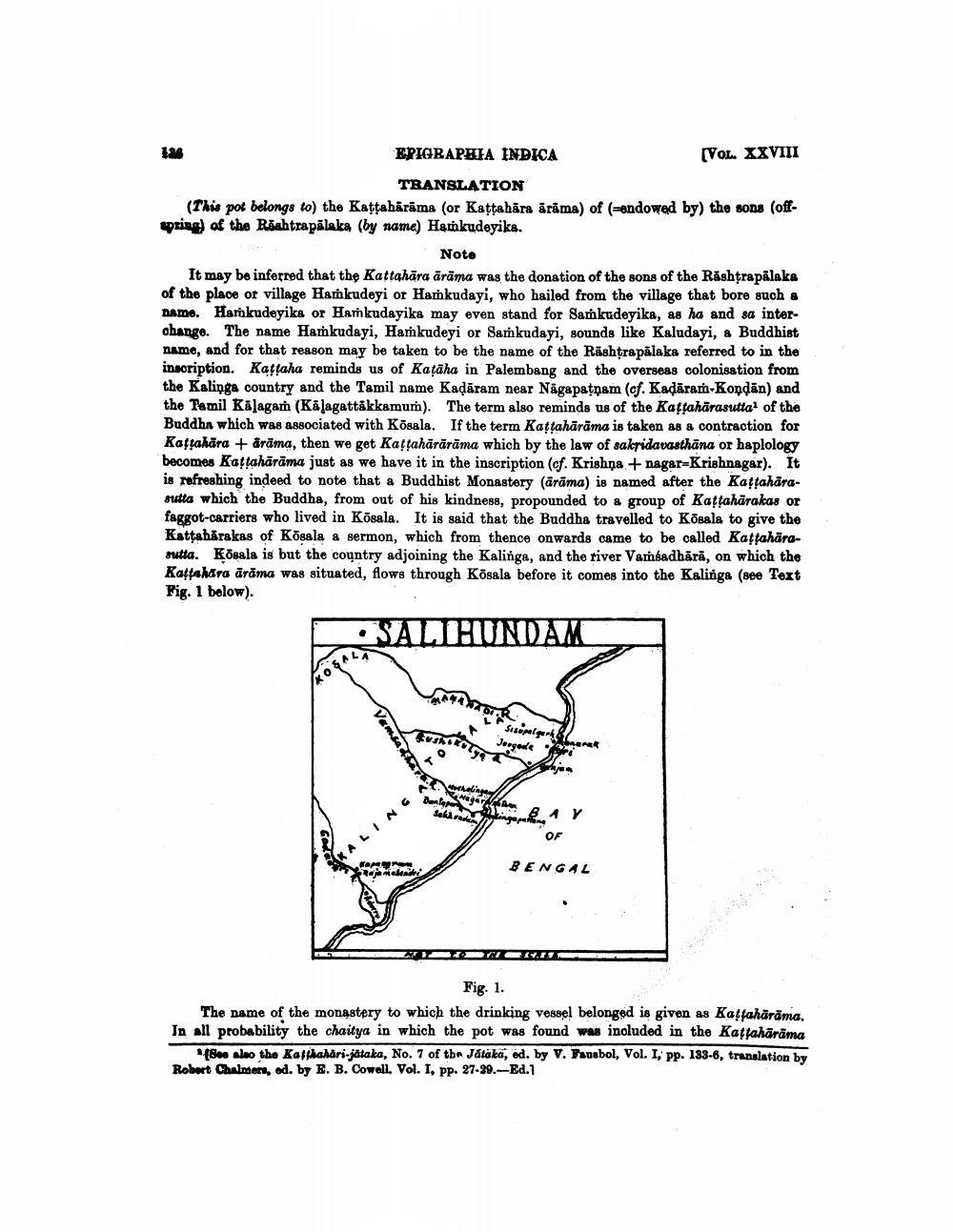________________
EPIGRAPHIA INDICA
TRANSLATION
(This pot belongs to) the Kaṭṭahārama (or Kaṭṭahāra ārāma) of (=endowed by) the sons (offspring) of the Rashtrapalaka (by name) Hamkudeyika.
126
Note
It may be inferred that the Kattahāra äräma was the donation of the sons of the Rashtrapalaka of the place or village Hamkudeyi or Hamkudayi, who hailed from the village that bore such a name. Hamkudeyika or Hamkudayika may even stand for Samkudeyika, as ha and sa interchange. The name Hamkudayi, Hamkudeyi or Samkudayi, sounds like Kaludayi, a Buddhist name, and for that reason may be taken to be the name of the Rashtrapalaka referred to in the inscription. Kattaha reminds us of Kataha in Palembang and the overseas colonisation from the Kalinga country and the Tamil name Kaḍāram near Nagapatnam (cf. Kadaram-Konḍān) and the Tamil Kalagam (Kalagattakkamum). The term also reminds us of the Kaṭṭaharasutta1 of the Buddha which was associated with Kōsala. If the term Kaṭṭahäräma is taken as a contraction for Kaṭṭahara+äräma, then we get Kaṭṭahäräräma which by the law of sakridavasthana or haplology becomes Kaṭṭahārama just as we have it in the inscription (cf. Krishna + nagar-Krishnagar). It is refreshing indeed to note that a Buddhist Monastery (arama) is named after the Kaṭṭaharasutta which the Buddha, from out of his kindness, propounded to a group of Kaṭṭahārakas or faggot-carriers who lived in Kōsala. It is said that the Buddha travelled to Kōsala to give the Kattahārakas of Kōsala a sermon, which from thence onwards came to be called Kaṭṭahārasutta. Kōsala is but the country adjoining the Kalinga, and the river Vamsadhārā, on which the Kaṭṭahāra äräma was situated, flows through Kösala before it comes into the Kalinga (see Text Fig. 1 below).
SALIHUNDAM
KOSALT
relinge Negar
Danlage Sektrodam
ALING
Sisopalgarh Joogade
BAY
OF
[VOL. XXVIII
BENGAL
Fig. 1.
The name of the monastery to which the drinking vessel belonged is given as Kaṭṭahärāma. In all probability the chaitya in which the pot was found was included in the Kaṭṭahārama
See also the Kathahari-jätaka, No. 7 of the Jataka, ed. by V. Fausbol, Vol. I, pp. 133-6, translation by Robert Chalmers, ed. by E. B. Cowell, Vol. I, pp. 27-29.-Ed.1




